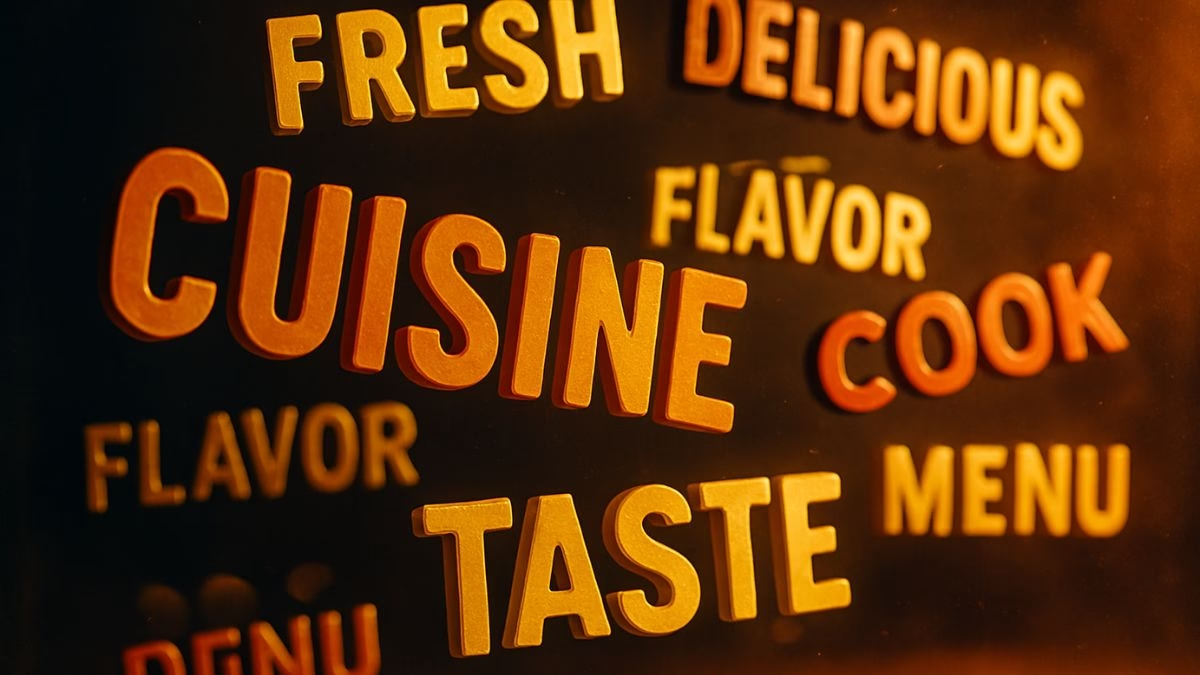Introduction
If you believe food is more than just fuel and that a meal can be a masterpiece, you’ve come to the right place. This quiz is designed for those who want to articulate their culinary experiences with the same passion and precision as the chefs who create them. It’s not just a test; it’s a tasting menu of tantalizing terminology.
By completing this quiz, you will:
- Talk Like a Chef: Learn the specific, professional terms that describe cooking techniques and food characteristics.
- Deepen Your Appreciation: Understanding the language of food enhances your ability to perceive and appreciate the skill that goes into a great dish.
- Receive Instant, Detailed Every choice you make is a learning opportunity, with clear explanations for why an option is right or wrong.
- Build a Sophisticated Palate (and Vocabulary): Move from saying a dish is “tasty” to describing its perfect ‘sear’, its ‘unctuous’ texture, or its delightful ‘gastrique’.
This is your chance to sharpen your culinary vocabulary and finally find the right words for your love of food. Let’s dig in!
Learning Quiz
This is a learning quiz from English Plus Podcast, in which, you will be able to learn from your mistakes as much as you will learn from the answers you get right because we have added feedback for every single option in the quiz, and to help you choose the right answer if you’re not sure, there are also hints for every single option for every question. So, there’s learning all around this quiz, you can hardly call it quiz anymore! It’s a learning quiz from English Plus Podcast.
Quiz Takeaways | From “Yum” to “Unctuous”: Speaking the Language of Food
Fantastic work on the quiz! Whether you breezed through it or discovered a few new terms, you’ve taken a significant step toward a richer appreciation of the culinary world. Being a foodie isn’t just about eating; it’s about understanding and articulating the experience. Let’s delve a little deeper into the concepts we’ve explored and see how they fit into the bigger picture of food and cooking.
At its core, the vocabulary we’ve covered can be broken down into a few key areas: techniques, textures, flavors, and concepts. Mastering these gives you the building blocks to describe almost any dish with confidence and precision.
First, let’s talk about techniques—the “how” of cooking. In the quiz, we encountered terms like ‘deglaze’, ‘chiffonade’, and ‘emulsify’. These aren’t just fancy words; they are precise descriptions of chemical and physical processes. When a chef ‘deglazes’ a pan, they are using a liquid to dissolve the caramelized sugars and proteins (known as the ‘fond’) that are stuck to the pan after searing meat. This isn’t just cleaning the pan; it’s harvesting pure flavor, which then becomes the base of a deeply rich sauce. Understanding this turns a “tasty brown sauce” into an appreciation for a deliberate, flavor-building step. Similarly, knowing the difference between a ‘roux’ and a ‘beurre manié’ shows an understanding of how thickeners work. Both use flour and butter, but a roux is cooked first to toast the flour and eliminate its raw taste, forming the foundation of classic sauces like béchamel or gumbo. A beurre manié, being a raw paste added at the end, is a finishing touch, a quick fix to tighten up a sauce just before serving. It’s the difference between building a foundation and making a final adjustment.
Next, let’s consider texture. Food is a multi-sensory experience, and mouthfeel is just as important as taste. We used the word ‘unctuous’ to describe slow-braised pork. It’s a word that goes beyond “tender” or “juicy.” It specifically describes the rich, smooth, almost lubricating quality of perfectly rendered fat. It’s a luxurious feeling. On the other end of the spectrum, we have ‘crisp’ chicken skin. The joy of that texture is its contrast to the tender meat beneath. The sound it makes, the brittle way it shatters—that’s all part of the experience. The same goes for the ‘crumb’ of bread. It’s not just the “inside”; it’s the whole inner world of the loaf. Is it chewy? Is it light and airy with big, irregular holes (an “open crumb”)? Is it dense and tight? This specific vocabulary allows you to articulate exactly what makes a particular loaf of bread so satisfying.
Flavor is, of course, central to our discussion. But advanced food talk moves beyond simple “sweet” or “sour.” We learned about creating a ‘gastrique’, which isn’t just a fruit sauce; it’s a sauce built on the principle of balancing caramelized sugar with the sharpness of vinegar. This concept of balance is crucial. We saw it again with the idea of a flavor ‘counterpoint’—using an earthy flavor like cumin to balance the sweetness of carrots. It’s like harmony in music; the different notes work together to create something more complex and beautiful than any single note could be on its own. We also talked about the ‘finish’ of a wine and the ‘heat’ from chili. These words describe not just the flavor itself, but its behavior—how it feels, how long it lasts. Does the flavor disappear the moment you swallow, or does it have a long, pleasing ‘finish’? Is the spiciness a sharp, aggressive ‘burn’ or a pleasant, spreading ‘heat’? These are the details that separate a simple tasting from a true analysis.
Finally, we have the conceptual language of food. Terms like ‘à la minute’ describe a philosophy of freshness and immediacy. It’s about timing and respect for the ingredients. A scallop cooked ‘à la minute’ is respected; its delicate texture is preserved by cooking it at the very last second. Contrast this with a long-braised dish, which requires hours of slow, patient cooking to achieve its goal. Neither is better than the other, but they represent different approaches to time and transformation. Even a simple plating instruction, like creating a ‘swish’ of puree, is conceptual. It’s about artistry, visual appeal, and creating a dynamic experience for the diner before they even take a bite.
So, how do you continue this journey? Pay attention. When you eat at a restaurant or cook at home, think actively. Don’t just taste—analyze. What techniques were likely used here? How would I describe this texture with precision? What is this tangy flavor doing to balance the richness of the fat? Read recipes from good chefs, watch cooking shows, and notice the specific language they use. You’ll find they rarely use vague words like “nice” or “tasty.” They speak in a language of process, texture, and balance.
By learning this language, you’re not becoming a food snob. You’re becoming a more conscious and appreciative eater. You’re equipping yourself with the tools to understand the craft behind the food you love and to share that love with others in a more meaningful way. So go forth, and may your meals always be delicious, and your vocabulary to describe them, even more so.










0 Comments